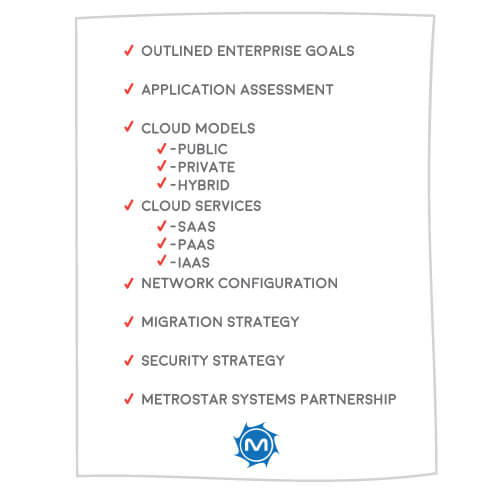Choosing a 'Just Right' Cloud Solution For Your Enterprise
7 MIN READ
03/07/2017 | Cloud

As a Chief Technology Officer, Goldilocks had long wanted to upgrade the nationwide operations of her bolstering business. Armed with thoroughly Googled knowledge of cloud migration, she attempted to pick out a cloud solution that’s just right for her enterprise. Some were secure, but too costly. Some allowed full virtualization, but were time-consuming. Some featured enhanced capabilities, but required a major operational overhaul. Uh-oh, she thought. It’s the porridge situation all over again.
As the sense of urgency increases for organizations of all sizes to implement cloud solutions, there now exists a wide selection of available services to facilitate complete data, process, and application migration. Many management officials and stakeholders are growing increasingly aware of what the cloud is, what it can do and how it can benefit the capabilities of their organization. (For a quick refresher, you can watch the Cloud episode of MetroStar Minute.)
Organizations have a menu of choices, from monoliths like Amazon, Google and Microsoft to smaller independent tools. The following are three cloud implementation models organizations should consider before committing to an implementation:
Model 1: Public Clouds
-jpg.jpeg?width=300&name=goldilocks-cloud-blog-3-300x300%20(1)-jpg.jpeg)
Public cloud solutions like Amazon Web Services, Google Compute Engine, and Microsoft Azure allow enterprises to pay only for the bandwidth consumed while delivering the service over the internet. It’s cost-efficient and scalable, but public clouds are shared-resource environments that are vulnerable to security risks. If your organization just needs to collaborate and exchange non-critical data across teams, a public cloud solution can do the job.
Model 2: Private Clouds
-jpg.jpeg?width=300&name=goldilocks-cloud-blog-4-300x300%20(1)-jpg.jpeg)
Private cloud solutions, meanwhile, ensure a higher level of secure transfer and control since they provide a dedicated data center to a single organization. Also known as "internal cloud," this system can be accessed only by internal users. However, this setup demands more internal management and resources. This means more work dedicated to maintaining the system and, in turn, more people required to manage it. It takes many hands to handle the pot. If not planned properly, setting up a private cloud solution could still amount to the same expenses that you would incur on ownership of a traditional data center. The expense does pay off, though, with the promise of a more secure, more customized and more controlled virtual environment for the organization.
Model 3: Hybrid Clouds
-jpg.jpeg?width=300&name=goldilocks-cloud-blog-2-300x300%20(1)-jpg.jpeg)
Combining the best characteristics of a public cloud and a private cloud, the hybrid cloud is steadily becoming a preference for organizations with unique needs. The advantage of a hybrid cloud solution is having the flexibility to use a private cloud for security-sensitive data and a public cloud for most workloads. Your organization could also go with a multi-cloud strategy wherein the system leverages multiple public and private cloud setups to enable varying and highly dynamic processes that exist within the organization. Here, though, the pitfall lies in ensuring seamless integration. Having a combination or a multitude of cloud setups could easily result in latency and other performance issues.
The menu of choices doesn't end there. There are service categories, too.
Cloud Service Categories
-jpg.jpeg?width=300&name=EDITEDgoldilocks-cloud-blog-05-300x300%20(1)-jpg.jpeg)
SaaS (Software as aService) is the most popular type. Examples include Salesforce, Google Apps, Netflix and Dropbox. The service is purchased, hosted on the internet and can be accessed on any device, which is ideal for organizations with simple, minimal data collaboration and exchange requirements.
PaaS (Platform as a Service) solutions similarly work over the internet, but the difference is that instead of providing access to the application itself a la Dropbox, they provide the platform upon which the software can be built. The solution is developed, not purchased, which means that you can create applications that are customized for the business within the PaaS provider’s framework.
Amazon Web Services, Google Compute Engine and Microsoft Azure are all categorized as IaaS (Infrastructure as a Service). These big-ticket cloud solutions provide the hardware and software to give your organization true control and customization over applications, servers, storage, network and operating systems.
Now, let all that information sink in. Deciding on the right cloud solution can be daunting because of the many pros and cons—a lot like ordering from a menu.
Don't get instant. Learn the right way to deploy a cloud solution.
-jpg.jpeg?width=300&name=goldilocks-cloud-blog-6-300x300%20(1)-jpg.jpeg)
Choosing a cloud solution is not one-is-better-than-the-other and it truly depends on the organization’s mission and what it can afford to sacrifice. Each option is either too-this or too-that and the exact solution rarely exists in one package. This is because the decision actually depends on several important factors, not just cost, productivity, and ease-of-use.
What is your organization’s mission? Which operations and applications go up in the cloud and which ones stay on-site? Does the IT ops team have the skill, certification and experience to manage the migration from their end?
Get an expert to share their secret ingredients.
-jpg.jpeg?width=300&name=goldilocks-cloud-blog-7-300x300%20(1)-jpg.jpeg)
It’s not entirely about going into the nitty-gritty of these options and understanding them yourself, but being able to define enterprise goals and requirements and be firm about them. The secret ingredient? Choosing the right partner to help you deploy the right cloud solution for your organization.
Based on the goals and requirements that you’ve outlined, consult with your IT partner (someone like MetroStar Systems, who has extensive experience and expertise in cloud implementation) to assess the suitability of your applications and network needs for cloud migration.
This partnership will guide you in choosing the right cloud migration service and will allow you to take full advantage of the input of cloud subject matter experts. Chances are, your IT partner will also provide you with access to a cybersecurity professional to help you build a secure framework for your organization's most crucial data and processes.
Cloud deployments and migrations are a continuous process. The selection isn't necessarily the critical part. The end-result truly depends on how well you plan the migration strategy and how thorough you do testing to identify hiccups and possible fixes.
-gif.gif?width=300&name=output_G0m6jz%20(1)-gif.gif)
There's a recipe to the right cloud solution for your organization.
Even if there are readily available cloud migration services, try not to just pick one off the table. Cloud solutions are just like Goldilocks' porridge choices. You can't get exactly what you need in an instant without proper taste-testing. You may find out that one solution doesn’t really suit all your enterprise goals and requirements—too this, too that.
Work with an IT partner (like MetroStar Systems) to cook up the right solution for your cloud migration. While enterprises must be sure that they are willing to make adjustments and compromises during the migration process, there will always be a way to fully satisfy an organization’s appetite for full digital transformation—not too hot that it’s high-risk, not too cold that it has less productivity impact, but just right.

Ready to get cooking? Here's a handy little shopping list of the things you need to prep for cloud migration!

Discover how MetroStar can help you navigate the cloud.

Written By:
Racine Anne Castro
Former Contributor
you might like these too
want to stay in the loop?
Never miss a thing by signing up for our newsletter. We periodically send out important news, blogs, and other announcements. Don’t worry, we promise not to spam you.

